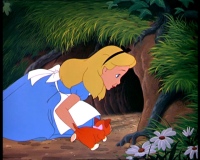The framing of the debate in advance of the availability of the iPad device has centered around control of the words “freedom, choice and health.” The reactionary forces claim the iPad will be detrimental to all three. Within minutes of the conclusion of Steve Jobs’s presentation, the swiftboating of the iPad was under way. Our freedoms are being curtailed; our choices limited and the health of the ecosystem is threatened. The iPad is a deviation from the one true path.
Another vector of dissatisfaction involves the paternity of the iPad. One look at its features and cognitive dissonance sets in among its detractors. Surely a tablet computer is the child of the laptop– what happened to all the ports, the keyboard; where’s the operating system? This Jobs fellow has disfigured the child, removing ports to satisfy some twisted personal vision— and, no doubt, because he hates our freedoms.
But the iPad is the child of the iPhone, not the laptop. There never was a physical keyboard, the ports are the same and so is the operating system. You can’t remove a port that was never there. The child resembles its parent in every way. Although, one must admit, it’s quite unusual for the child to be larger than the parent. Brian Dear, who has criticisms of his own, may have captured the seed of the idea in an interaction between Steve Jobs and Alan Kay:
…Steve announced the iPhone for the first time to the public. After the event, Alan recalled Steve walking up to him to show him the new iPhone in person. He asked Alan, “So, did we build something worth criticizing?” Alan recalls telling him sure, but if you could just make the screen 5″ by 8″, you would take over the world. Steve’s eyes apparently lit up.
The iPad is definitely worth criticizing. And what can you say about a product when both people who love it, and those who hate it, admit they must buy it? Its significance is big enough that simply withholding attention and comment will have little effect on the course of events. You’ll have to pick the device up and touch the glass.
In advance of holding one in my hands, there are two areas I’d like to explore where it looks like the iPad will open doors and make new connections possible.
While we attribute much of the success of the human species to our brains, we owe an equal amount to the dexterity and power of our hands. While the power of thought enables us to apply levels of abstraction to the world; it’s the fine motor control over our hands that allows us to bring these ideas into the world. Apple made a significant design decision when they chose the hand over the stylus, the scrollwheel, the trackball and the physical keyboard. Our fingertip touching the glass makes a direct connection to the virtual controls. This is both a technical and an emotional interaction point. The pleasure derived from the multi-touch interface with real-time responsiveness will quickly make it the most desirable and the most used.
The larger multi-touch interaction surface of the iPad will open the door to a whole range of personal computing gestures. It’s likely that electronic gaming will lead the way, and this is where users will try out thousands of new gestures — some will rise to the top and become defacto standards. Here the opposable thumb, the power grip and the precision grip will expand their repertoire to include the pinch, the spread, the swipe, the twist and others. And the accelerometer expands this interaction model into three dimensions.
And while Apple isn’t the only company whose worked extensively on these new interaction models, they get first mover advantage for introducing the tablet computer in 2007 and calling it a telephone. Creating a product in the lab is one thing, but putting a product on the street and getting uptake is another entirely. We’re seeing the new digital network joined to the original digital network.
Another kind of interaction that the iPad will change is the technology-mediated consultation. In these scenarios, typically the client gives the professional a bunch of personal data. That data is entered into a laptop or a desktop, numbers are crunched, reports formatted and then presented to the client in a meeting. The technology introduces large breaks into the human interaction. Melanie Rodier in her post for Wall Street & Technology asked whether the iPad has a place in the capital markets:
“I see the laptop as not a good collaborative tool,�? he explains. A laptop computer acts as a barrier between the adviser and client, since it is only one person (presumably the adviser) who will handle the keyboard, hit the return key and flip the computer round to face the client.
On the other hand, with an iPad, you can reach over and touch the screen, instead of having to navigate with a button or a mouse. “With the iPad, an adviser could navigate better, sweep pages across, look at a client’s financial plan and statements, and work more collaboratively side by side. It’s a subtle difference. The touch-screen means you can sit on the same side of the table, work as a partner,�? Dannemiller adds.
This kind of change isn’t necessarily in the algorithms used to crunch the data, but rather in the human interaction— the human transaction between the parties. The bond between the consultant and client is strengthened, as is the connection between the client and her data. The tablet format changes the sheer physicality of the interaction. The affordances, or action possibilities, of the consultation are no longer dominated or broken by the technical mediation. The devices recede to allow the people to connect.
The new Puritans have sprung up to save us all from this new impure device. Somehow I’m reminded of the early reaction to Elvis Presley, or when Dylan went electric. The iPad has abandoned the folk movement, it’s sold out, it’s left the one true path of protest music. The iPad smiles and looks askance. “Well, I just think of myself as a song and dance man. You know…”
The Puritans have coalesced around the mantra of “open.” For the Web, HTML5 is the sacred book— although it is unfinished, and there are still many sects within the fold. A specification isn’t a platform, so HTML5 must extend its control through the major denominations: Webkit, Gecko, Trident, KHTML and Presto. When we say, for instance, that HTML5 supports the H.264 video codec, what we’re really saying is that a runtime plugin for that media type must ship with all orthodox HTML layout engines. On this point of scripture, the Gecko sect has reservations. Runtimes outside the Holy stack are strictly the devil’s work.
But purity is just a myth. Dylan’s electric music had elements of the folk song; and his folk songs had elements of rock and roll. At bottom the “closed” iPhone OS was built up from the open source Darwin operating system. And Darwin had its roots in Berkeley Unix. If you want to build an “open” iPhone OS, you can take the same raw materials and knock yourself out.
The real question is what does it take to break through? To create a new kind of computing experience, not in the labs, but in people’s homes, in the cafes, schools and businesses. The answer isn’t in feature sets, ports or adhering to technical religious dogma. When you pick the device up, does it make you want to dance? I know that the puritans have forbidden dance. They’ve given us stern warnings about what will happen if we dance with this new partner. But when you put your fingers on the glass, do you feel a tingling in your toes?
One Comment











